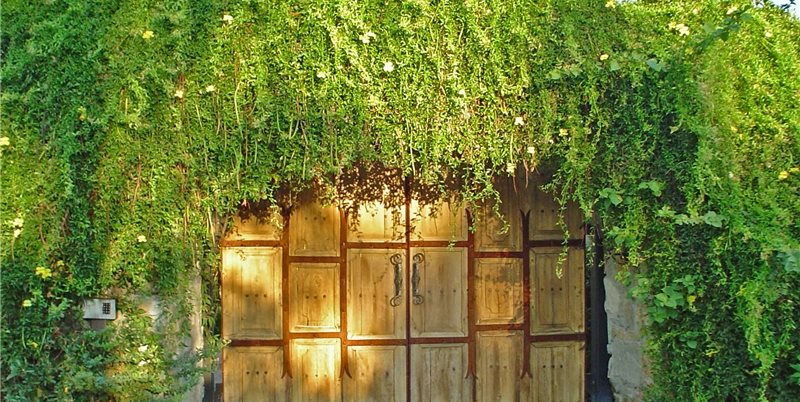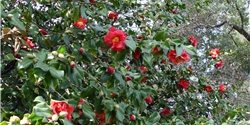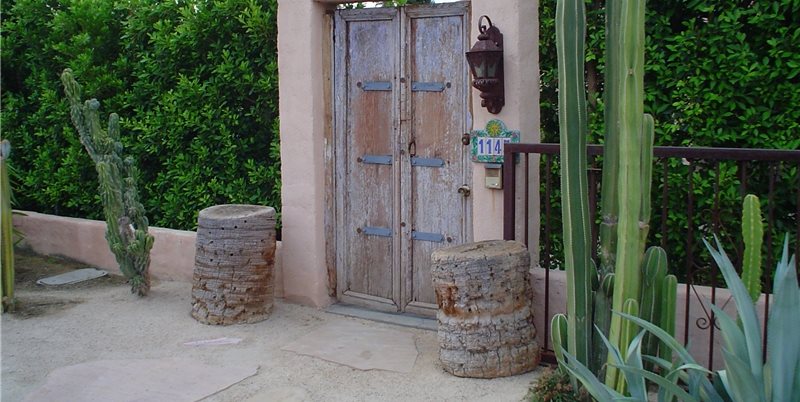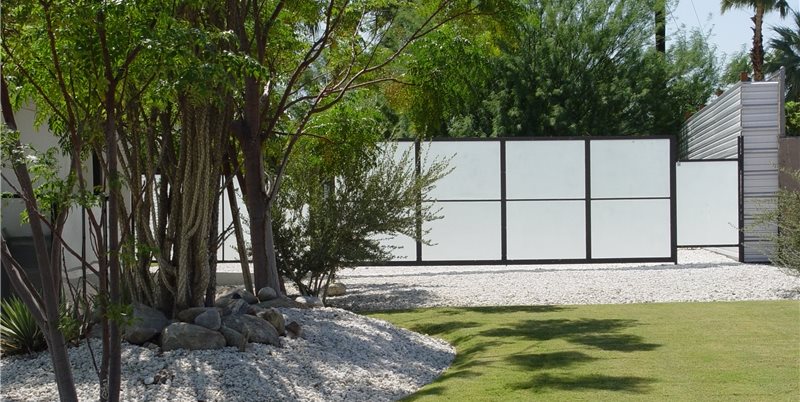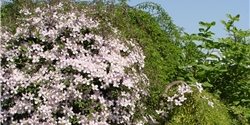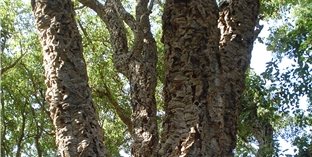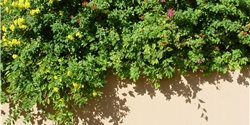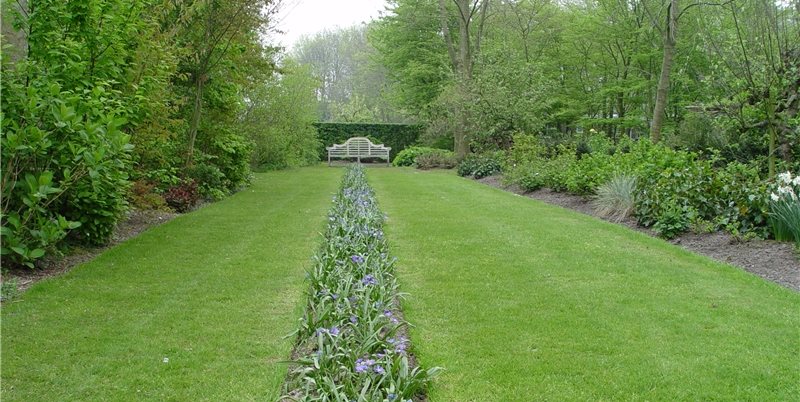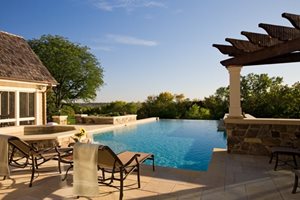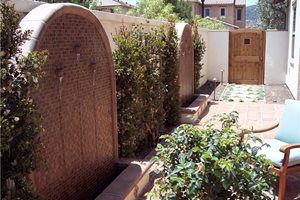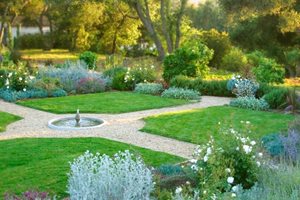Noise Reduction Landscaping
Four ways to design for peace and quietIf you have a noise problem in the area of your new landscape, be sure to make it crystal clear to your landscape designer. This is doubly important if it's only periodic and not apparent when he or she meets with you. Yes there are things that can be done to make it less bothersome. No, you can't mitigate it altogether. If it is a serious issue, make sure you hire a designer well-trained in the various acoustical control concepts. Here are four methods commonly used for sound attenuation (the reduction of intensity of outdoor sounds before they reach the receiver).
1. Sound Absorption
This method uses plants to entrap or absorb sound vibrations. It is the most commonly used, particularly for large scale applications.
Sound is absorbed by all parts of the plant such as leaves, branches, twigs and wood. The rougher the bark the better it absorbs sound. Experts say the best species for this will have many branches and thick, fleshy leaves with thin petioles (leaf stem). These broadleaf species lose their effectiveness in the winter when deciduous. Fortunately they leaf out for maximum advantage during the months when windows are open and you're spending time outdoors. In warm climates many more broadleaf evergreens can be used for sound absorption benefits all year around.
- Fact: A sound attenuation barrier is most effective when located closest to the source of the sound.
Large shrubby trees can also be effective at scattering sound waves. The deeper and more dense the barrier the greater its scattering potential. This illustrates the biggest problem: your designer needs space for an effective solution.
2. Sound Deflection and Reflection
This method causes the noise to be bounced away from the recipient and sometimes back toward the source. The difference is based upon the density and rigidity of the barrier. Your designer can create attractive and effective partitions that may serve as a fence, but also double as sound barriers.
When sound waves strike a 5 or 6 foot masonry wall, it does not vibrate so the waves are reflected back toward the source. The sound waves that are higher up will go right over the wall. That's why the freeway is so loud when it runs between two masonry sound walls. It's also why sound absorption plants are used in conjunction with walls to catch the higher level sound.
When sound waves strike a slightly flexible panel it will vibrate. This transforms sound waves into other forms of energy, and also deflects them off in different directions. The more flexible the material, the greater the deflection. Common materials for sound deflection barriers are fiberglass and corrugated metal.
A benefit of using a designer familiar with sound issues is that they will be familiar with state-of-the-art specialty materials designed for outdoor use partitions just as egg crate foam is utilized as sound proofing in music studios.
3. Sound Refraction
This little known effect occurs when noise is dissipated, diffused or dispersed by striking a rough surface on any plain. It's easier to understand using a room of your house as an example. If it is empty with a bare floor and walls, every sound bounces off the hard surfaces to magnify it or even cause a slight echo as it bounces around. Add carpeting and the echo vanishes.
- Tip: Beware of hard, sleek modern designs outdoors in urban environments. The emphasis on manufactured materials rather than plants in this style can truly exacerbate the audibility of city noise.
Outdoor surfaces coated in plants can have much the same effect. It's why freeway sound walls are often planted with clinging vines such as Boston Ivy or creeping fig. On the ground plain the most powerful tool is lawn, due to its large area and excellent refraction ability. Make sure your designer is on her toes to utilize these surface coverings whenever possible to keep urban din from bouncing around your courtyard.
4. White Noise
This is a very different solution than the first three. It is designed to create sound that is appealing to the human brain as a mask for undesirable noise. The most widely used method is a fountain that makes loud splashes. When selecting a water feature with your designer, insist she find one that makes a lot of noise when you want it, such as rush hour. Then later in the evening when the city is quieter, you can dial it down to a more subtle level. A landscape where absorption, deflection or refraction solutions are in place can help a smaller fountain become far more effective than you might think.
Remind your designer that plants can also make white noise too, that is if you choose the right ones. Wind in pine needles produces a distinctive sound. The rustle of stiff oak leaves or that of dry autumn ones can make problem noise seem minimal. Quaking aspen and bamboo are also recommended for this. In addition, these trees also attract birds and other wildlife that make their own sounds further masking noise.
Creating effective sound attenuation requires a professionally trained designer who is well aware of the nuances of all these techniques. For more serious projects a civil engineer may be able to put serious mitigation measures into place. The nature of noise and its source are so highly variable that the viable solutions may be few and only partially effective. Discuss it with your designer in detail and again, if you experience a severe noise problem, make sure she fully understands your concerns. It may not be readily apparent to her nor as bothersome. If you fail to do so, there is a real possibility that you may end up with a design that is not only unresponsive to noise reduction, it could in fact, make it worse.

 Backyards
Backyards
 Front Yards
Front Yards
